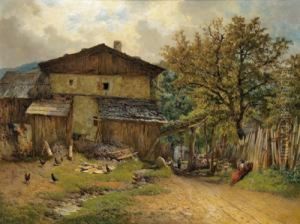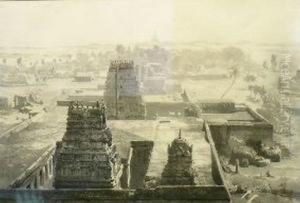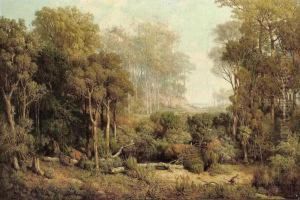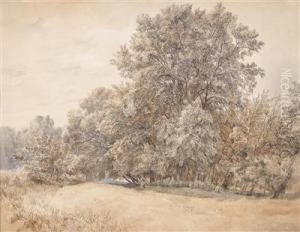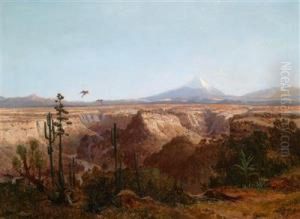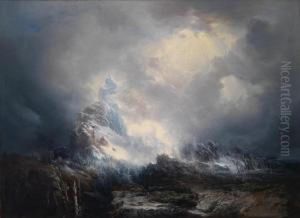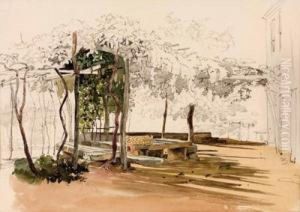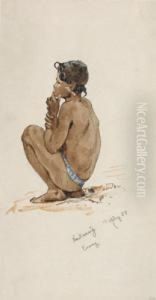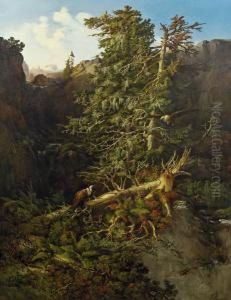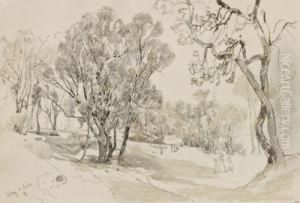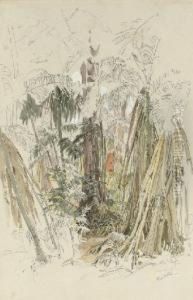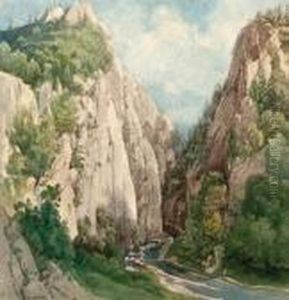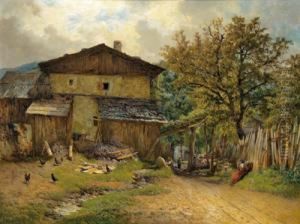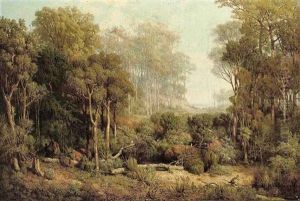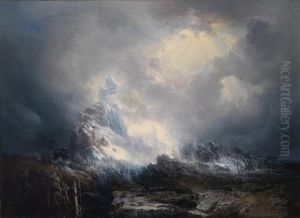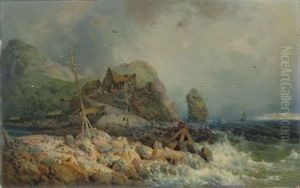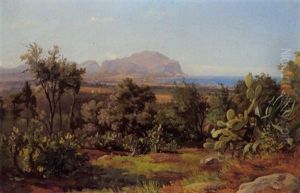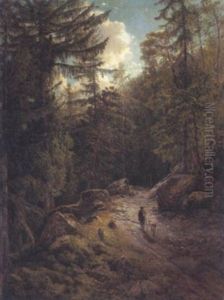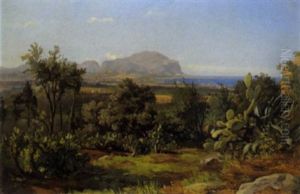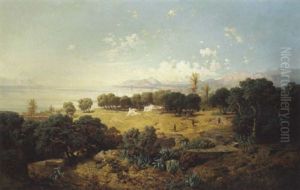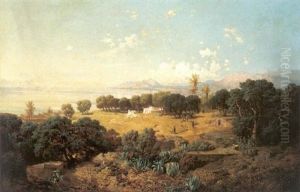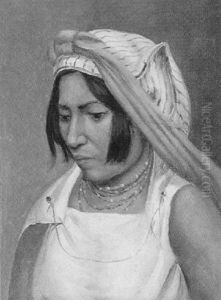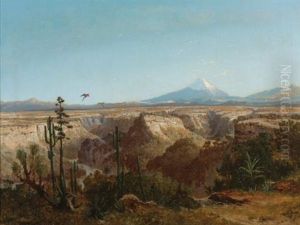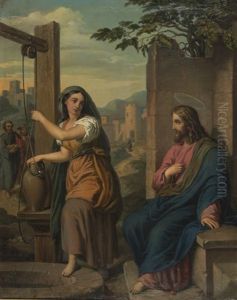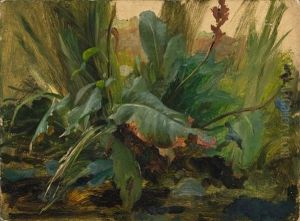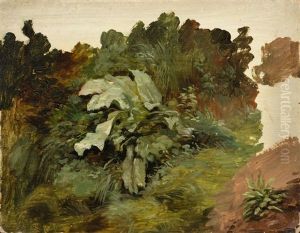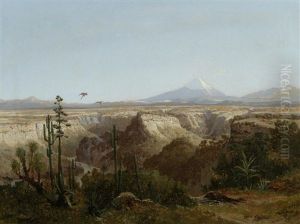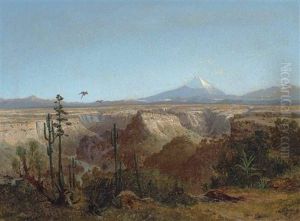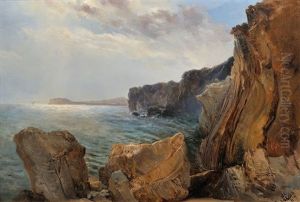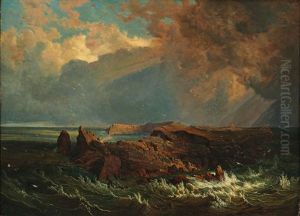Josef Selleny Paintings
Josef Selleny was an Austrian artist known for his landscape and architectural paintings. Born on January 14, 1824, in Pressburg, now Bratislava in Slovakia, Selleny was a prominent figure in the Austrian art scene of the 19th century. He began his artistic training at the Academy of Fine Arts Vienna, where he was influenced by the Biedermeier style, prevalent during that period in Austria.
Selleny's talent was recognized early in his career, and he was awarded a scholarship to study in Italy, a trip which had a significant impact on his artistic development. During his time in Italy, particularly in Rome, he became acquainted with the Nazarenes, a group of German Romantic painters who aimed to revive honesty and spirituality in Christian art. Their influence can be seen in the meticulous detail and use of bright color in Selleny's work.
Throughout his career, Selleny traveled extensively, drawing inspiration from various European landscapes and architecture. He was particularly drawn to the idyllic and historical scenes, which he captured with precision and clarity. His works often depicted the Austrian and Italian countryside, and he had a keen interest in portraying the effects of light and atmosphere in his landscapes.
Selleny became a member of the Vienna Künstlerhaus and was well regarded by his contemporaries. His works were exhibited in numerous exhibitions and gained him a reputation as a master landscape painter. Despite his success, Selleny's life was marked by personal struggles, and he faced financial difficulties later in life.
Josef Selleny's contribution to Austrian art was significant, and his paintings are considered important examples of 19th-century European landscape and architectural art. He passed away on May 16, 1875, in Vienna. Today, his works are held in various art collections and museums, preserving his legacy as an artist who captured the beauty and serenity of the natural and built environment with exceptional skill.
